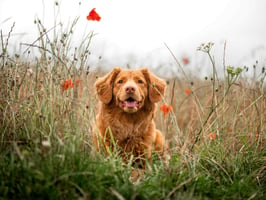Training your dog is an important and rewarding part of owning a pet. Basic obedience dog training...
Everything You Need to Know About Hound Training
Hound training is an essential part of raising a well-behaved, obedient dog. It involves teaching your pup the basics of obedience, such as responding to commands, walking on a leash, and being social with other animals and people. With the right techniques, hound training will help you create a strong bond with your pup and make them a happy, healthy, and well-behaved member of your family.
Why Is Hound Training Important?
Hound training is important for a variety of reasons. First, it teaches your pup to respond to commands and follow basic rules. This helps to create a safe and secure environment for you and your pup. It also helps to prevent problem behaviors from developing. Hound training also helps to create a strong bond between you and your pup, allowing you to better understand and communicate with each other.
In addition, hound training helps to socialize your pup with other animals and people. This is especially important for hounds, who are known for being independent and territorial. Through hound training, you can teach your pup to be friendly and tolerant of other animals and humans.
Hound training is essential for creating a strong bond with your pup and teaching them the basics of obedience. It can also help to prevent problem behaviors from developing and allows your pup to be social with other animals and people.
Getting Started with Hound Training
The first step in hound training is to create a safe and secure environment for your pup. This means making sure that your pup has a comfortable place to sleep, plenty of toys to play with, and a secure area to explore. This will help to create a positive environment for hound training.
The next step is to determine your pup’s personality. Hounds are known for being independent and territorial. This means that it is important to create a training plan that is tailored to your pup’s individual needs. This will help to ensure that your pup is learning at a pace that is comfortable for them.
Once you have determined your pup’s personality, you can begin the training process. Start by teaching your pup basic commands such as “sit”, “stay”, and “come”. Once your pup has a good understanding of these commands, you can move on to more advanced commands such as “heel” and “down”.
Getting started with hound training begins with creating a safe and secure environment for your pup and determining their personality. You can then start teaching basic commands and move on to more advanced ones.
Hound Training Tips and Techniques
When it comes to hound training, there are several tips and techniques that you can use to make the process easier. Here are some of the most important ones:
- Keep sessions short and positive: Hound training sessions should be kept short and positive. This will help to keep your pup motivated and engaged in the process.
- Use positive reinforcement: Positive reinforcement is one of the most effective methods of hound training. When your pup does something correctly, reward them with treats or praise.
- Be consistent: Consistency is key when it comes to hound training. Your pup needs to know that you mean what you say and that you’re not going to change your mind.
- Be patient: Hound training can be a long process and it’s important to be patient with your pup. Don’t expect them to learn everything overnight and don’t punish them for making mistakes.
When it comes to hound training, it is important to keep sessions short and positive, use positive reinforcement, be consistent, and be patient. These tips and techniques will help to make the process easier and more effective.
Common Mistakes to Avoid When Hound Training
When it comes to hound training, there are several common mistakes that you should avoid. Here are some of the most important ones:
- Using punishment: Punishment is not an effective method of hound training. It can lead to aggression, fear, and anxiety in your pup.
- Getting frustrated: When your pup isn’t responding to commands, it can be easy to get frustrated. However, it is important to remain calm and patient with your pup.
- Not rewarding good behavior: Positive reinforcement is essential for hound training. When your pup does something correctly, make sure to reward them with treats or praise.
- Not being consistent: Consistency is key when it comes to hound training. Make sure to use the same commands and rewards every time.
When hound training, it is important to avoid using punishment, getting frustrated, not rewarding good behavior, and not being consistent. These mistakes can lead to aggression, fear, and anxiety in your pup.
Conclusion
Hound training is an essential part of raising a well-behaved, obedient dog. It involves teaching your pup the basics of obedience, such as responding to commands, walking on a leash, and being social with other animals and people. With the right techniques, hound training will help you create a strong bond with your pup and make them a happy, healthy, and well-behaved member of your family.
Getting started with hound training begins with creating a safe and secure environment for your pup and determining their personality. You can then start teaching basic commands and move on to more advanced ones. When it comes to hound training, it is important to keep sessions short and positive, use positive reinforcement, be consistent, and be patient. Finally, it is important to avoid using punishment, getting frustrated, not rewarding good behavior, and not being consistent.
By following these tips and techniques, you can ensure that your pup will be a happy, healthy, and well-behaved member of your family.



